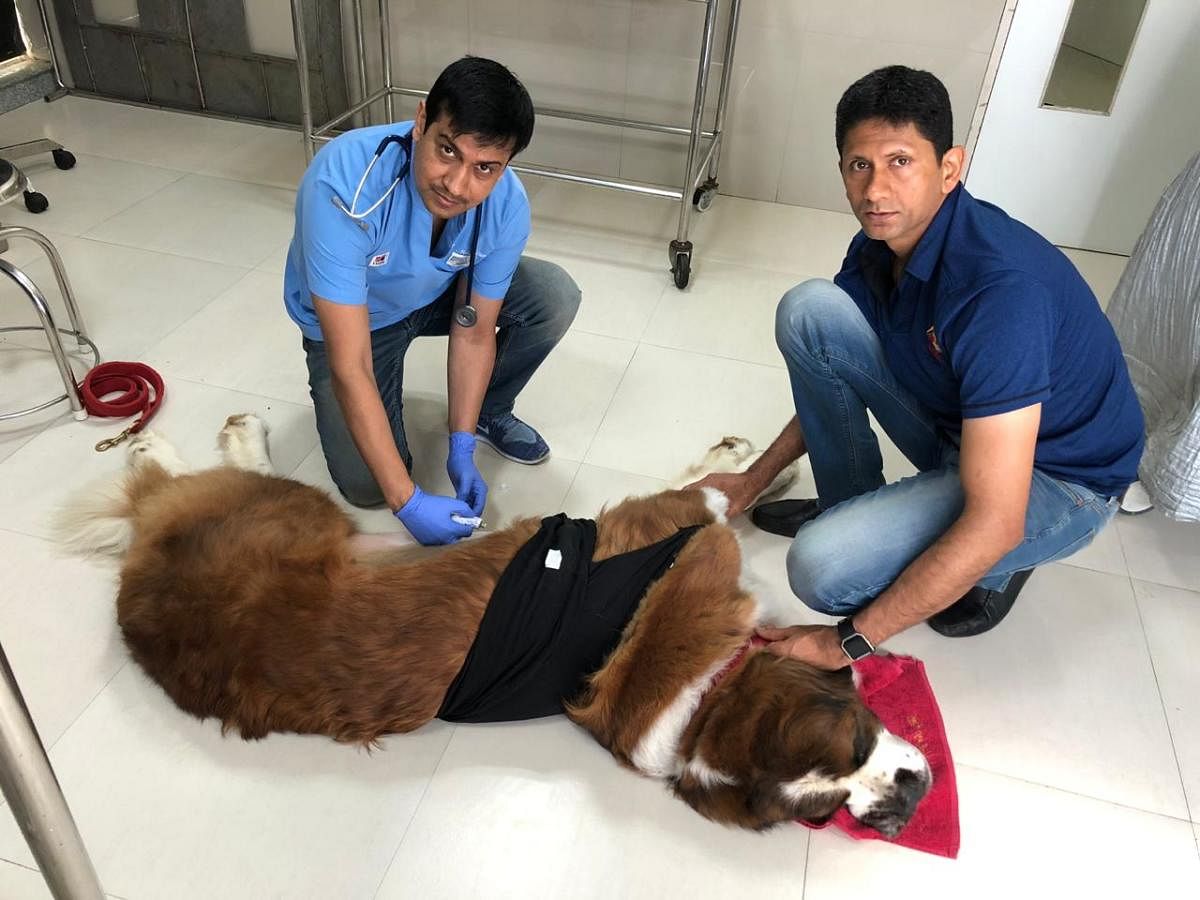
Gastric bloat, known medically as gastric dilatation-volvulus (GDV), is a problem that afflicts bigger pet dogs, and can be fatal.
Veterinarians Metrolife spoke to said they see 18 to 20 cases in a year.
The condition is more likely to occur in purebred dogs, since they have narrow and deep chest cavities, they say.
“About 24 per cent of large-breed dogs such as Doberman, Irish Setter, Weimaraner and German shepherd, 22 per cent of giant breeds such as St Bernard and mastiff, and 42 per cent of Great Danes suffer from it,” says Dr Ramesh Jangra, senior veterinary surgeon, Cessna Lifeline Veterinary Hospital.
Early detection is important because 50 per cent of dogs with the condition die if treatment is delayed.
What triggers this condition? “Most dogs develop it within a few hours of eating a heavy fermented meal, followed by exercise, because there is space in the stomach cavity and the stomach gets twisted to one side. They are not able to burp and expel the gases. This reaches a stage where the blood vessels are compressed and blood flow to the hind area is restricted,” explains Ramesh. The initial signs include trying to vomit with nothing coming out, the flow of saliva with a frothy liquid, a distended abdomen, and restlessness.
Dr Ramesh says gastropexy is the solution to bloating. “This is a process where we suture the stomach with the abdomen wall. This avoids the twisting of the stomach. After surgery, 90 per cent of dogs survive.”
Pet parents who have got gastropexy done on their dogs say gastric bloat must be treated as an emergency.
Preeti Narayanan, the founder of Happy Tailz, a pet parent, has seen three of her dogs go through the condition. “I lost my seven-year-old Irish Setter, Scarlett, to bloat 20 years ago. There were no clinics as we have today, so we rushed her to the Veterinary College in Hebbal. We managed to save her but she developed the condition again and died in a couple of weeks,” Preeti says.
A Dalmatian boarding in her house also developed the condition. “If your dog is looking listless, reluctant to get up and come to you and has an arched back, you must rush to a hospital with an emergency section. As bloat progresses, the stomach starts increasing in size and visibly so,” Preeti says.
Anjali Haridass lost a boxer and a St Bernard to the condition. “The boxer died first and in the case of St Bernard we couldn’t get him to the hospital in time. He died on the way,” recalls Anjali.
She currently has two Great Danes and two English Mastiffs. “As soon as I learnt that bloat is a condition that develops in bigger dogs, I got gastropexy done on both our Great Danes. This is a preventive measure,” says Anjali.
The procedure is being increasingly done in the US and most pet parents here are now learning about it.
What is gastric bloat (GDV)?
Gastric Dilatation-Volvulus is a life-threatening condition in dogs in which the stomach flips over and expands because of gases generated inside. Circulation to the stomach and spleen is subsequently interrupted, resulting in shock, which can cause death within hours.
Preventive measures
- Avoid breeding dogs with a history of GDV
- Preventive gastropexy can be performed during sterilisation
How successful is gastropexy?
Of dogs treated for GDV, only 4.3 per cent have a recurrence, compared to 54.5 per cent of those that do not undergo gastropexy.
Cricketer’s pet
Well-known Test cricketer Venkatesh Prasad and his wife Jayanti Prasad have three dogs. Raphael, their eight-year-old St Bernard, recently underwent gastropexy. Jayanti, who had earlier heard of bloating, says she lost no time in rushing Raphael to the hospital. “We were able to save his life only because we rushed him to hospital in time,” she told Metrolife.